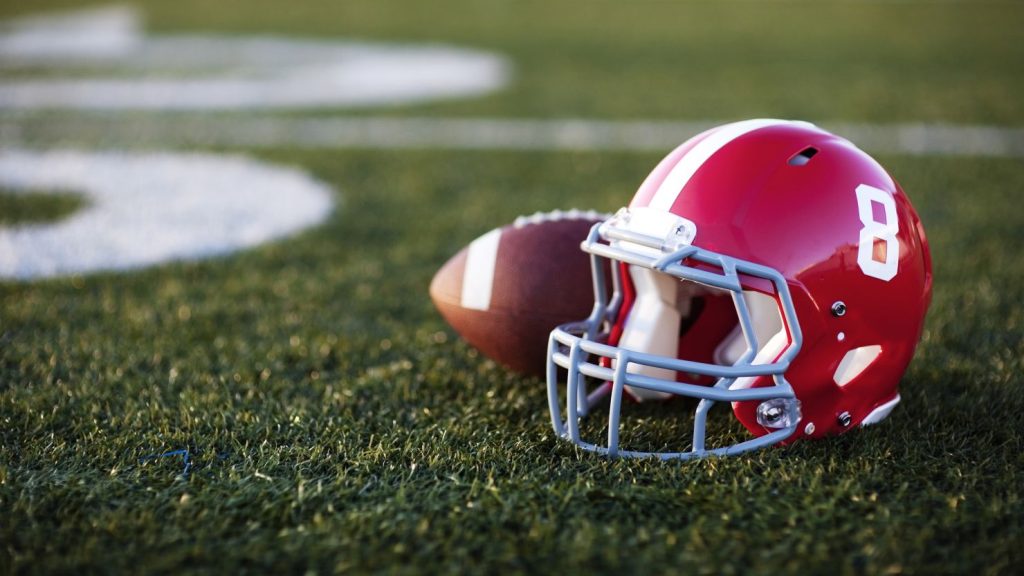In any sport or physical activity, safety should always be a priority. Whether you’re an amateur athlete, a weekend warrior, or a professional competitor, the right gear can significantly reduce the risk of injury. Injuries not only impact your performance but can also prevent you from enjoying your favorite activities. From head to toe, investing in protective gear designed for your specific sport is essential for both safety and performance. In this article, we’ll explore the essential gear you need to prevent injuries in various sports and fitness activities.
1. Helmets: Protecting Your Head
When it comes to preventing severe injuries, particularly head trauma, a helmet is one of the most important pieces of protective equipment you can wear. Helmets are designed to absorb impact and protect your skull from concussions, fractures, and other head injuries.
Sports that Require Helmets:
- Cycling: A good-quality bike helmet protects against falls and collisions. Modern cycling helmets are designed with advanced materials like polycarbonate shells and foam padding to absorb shocks effectively.
- Football: Football helmets are equipped with face masks and padding that protect not only the head but also the neck and face. These helmets are built to withstand high-impact collisions during the game.
- Hockey: Hockey helmets include additional padding and a face shield or cage to safeguard against pucks, sticks, and collisions with other players.
- Skateboarding and Rollerblading: Skateboard and rollerblade helmets protect against falls and provide impact resistance to prevent skull fractures.
Why They’re Essential:
- Prevent severe head injuries such as concussions
- Reduce the risk of skull fractures
- Provide visibility and protection from external elements (sun, wind)
No matter the sport, a helmet is a non-negotiable piece of equipment that can save your life in the event of a fall or collision.
![]()
2. Knee Pads: Protecting the Joints
Knee injuries are common in many sports, especially those that involve sudden movements, jumping, or contact. Knee pads are designed to cushion and protect the knee joint from impact, abrasions, and strains. Whether you’re playing basketball, volleyball, or participating in extreme sports, knee protection is crucial to prevent long-term damage.
Sports that Require Knee Pads:
- Basketball and Volleyball: These sports involve a lot of jumping and quick lateral movements, which can put significant stress on the knee joint.
- Extreme Sports (BMX, Skateboarding): When performing tricks or riding on rough terrain, the knees are vulnerable to impact.
- Rugby and Football: High-contact sports with frequent falls and tackles make knee protection essential.
Why They’re Essential:
- Absorb impact and prevent joint injuries
- Reduce abrasions and bruising in contact sports
- Enhance mobility and support for intense movements
By providing an extra layer of protection, knee pads help preserve joint health and allow athletes to perform without fear of damaging their knees.
3. Elbow Pads: Cushioning for the Upper Limbs
Elbow injuries can be debilitating, especially when they occur during falls or sudden impacts. Whether you’re skating, snowboarding, or playing contact sports, elbow pads offer vital protection for the elbow joint. Designed to absorb shock, elbow pads help prevent bruising, hyperextension, and fractures.
Sports that Require Elbow Pads:
- Skating and Skateboarding: These sports require frequent falls, making elbow protection essential.
- Biking and BMX: Falls and crashes can put a lot of pressure on the elbows, so wearing elbow pads helps reduce injury risk.
- Football and Rugby: Elbow pads provide cushioning against hard tackles and collisions.
Why They’re Essential:
- Protect elbows from direct blows and abrasions
- Prevent hyperextension of the elbow joint
- Help reduce the risk of joint inflammation and overuse injuries
Wearing elbow pads during physical activities where the arms are at risk of impact can prevent serious injuries and allow for safe participation.
4. Wrist Guards: Protecting the Wrists
The wrists are highly vulnerable to injury in many sports, particularly those involving falls or quick, repetitive movements. Wrist guards provide essential support and impact protection to prevent sprains, strains, and fractures.
Sports that Require Wrist Guards:
- Skateboarding and Snowboarding: Falling on an outstretched hand is one of the most common causes of wrist injuries in these sports.
- Rollerblading: Wrist guards protect against falls and the sudden impacts that can lead to fractures.
- Tennis and Golf: Repetitive motions in these sports can lead to wrist strains or injuries without proper support.
Why They’re Essential:
- Prevent sprains, strains, and fractures
- Offer support during repetitive motions
- Reduce risk of long-term damage to the wrist joint
Wrist guards stabilize and protect the wrist, giving athletes the confidence to perform without risking injury to their delicate wrist joints.
5. Ankle Braces: Stability and Support
Ankle injuries are common in many sports, especially those that involve quick direction changes, jumping, or running. Ankle braces provide stability, support, and protection to prevent sprains, strains, and twists.
Sports that Require Ankle Braces:
- Basketball: The fast-paced nature of basketball and frequent pivoting increases the risk of ankle sprains.
- Soccer and Football: The sudden stops and starts, combined with contact, make ankle protection essential.
- Running: Long-distance runners or those who frequently run on uneven terrain are at risk of ankle injuries.
Why They’re Essential:
- Prevent sprains and twists by stabilizing the ankle
- Provide compression to reduce swelling and improve circulation
- Allow for quicker recovery from past ankle injuries
Whether you’re recovering from an injury or looking to prevent one, wearing ankle braces adds essential support during athletic activities.
6. Mouthguards: Protecting the Teeth and Jaw
Mouthguards are essential for any sport that involves physical contact, as they help prevent damage to the teeth, gums, and jaw. They absorb impact forces, reducing the risk of dental fractures, concussions, and jaw injuries.

Sports that Require Mouthguards:
- Football: Contact with other players or the ball can cause injury to the teeth or jaw.
- Hockey: Pucks, sticks, and physical contact put athletes at risk of oral injuries.
- Martial Arts: Strikes to the face can cause significant damage to the teeth or jaw without proper protection.
Why They’re Essential:
- Protect teeth from impact and fractures
- Prevent jaw injuries and concussions
- Improve confidence when engaging in contact sports
Mouthguards are a simple but vital piece of safety gear that help preserve your oral health and prevent more serious head injuries.
7. Protective Pads for Specific Sports
Certain sports require specialized protective gear to safeguard against injury. These pads are designed to protect vital areas from impact and abrasions.
Common Protective Pads:
- Shoulder Pads (Football, Rugby): Protect the shoulder and upper body during tackles and impacts.
- Shin Guards (Soccer, Hockey): Shield the shins from kicks, sticks, and pucks.
- Chest Protectors (Baseball, Cricket): Protect the torso from high-speed balls or errant hits.
Why They’re Essential:
- Prevent serious injuries to the torso, shins, and shoulders
- Allow athletes to engage in physical contact safely
- Increase overall comfort and confidence during intense play
Wearing sport-specific protective pads is crucial for minimizing the risk of injury during high-contact or high-speed activities.
8. Proper Footwear: Support for Every Sport
Proper footwear is essential for preventing injuries, especially those related to foot, ankle, and knee alignment. Shoes that provide proper support, cushioning, and stability help reduce the risk of injury in any sport.
Types of Sport-Specific Footwear:
- Running Shoes: Provide cushioning and arch support to reduce impact on joints.
- Football Cleats: Offer grip and stability for fast directional changes on grass fields.
- Tennis Shoes: Designed to provide lateral support for quick movements during a match.
Why They’re Essential:
- Reduce impact on feet, ankles, and knees
- Prevent slips and falls with proper traction
- Support proper posture and alignment
Wearing the right footwear for your specific sport ensures safety, comfort, and performance during every workout or game.
Conclusion
No matter the sport or activity you enjoy, safety should always come first. Using the right gear—whether it’s helmets, knee pads, wrist guards, or proper footwear—can make a world of difference in preventing injuries and ensuring that you can continue performing at your best. By investing in high-quality protective equipment, you’re not only safeguarding your health but also improving your overall performance. Always make sure to choose gear that fits properly, is appropriate for your sport, and is made from durable materials. Prioritize safety, and you’ll enjoy many years of injury-free participation in your favorite activities.


